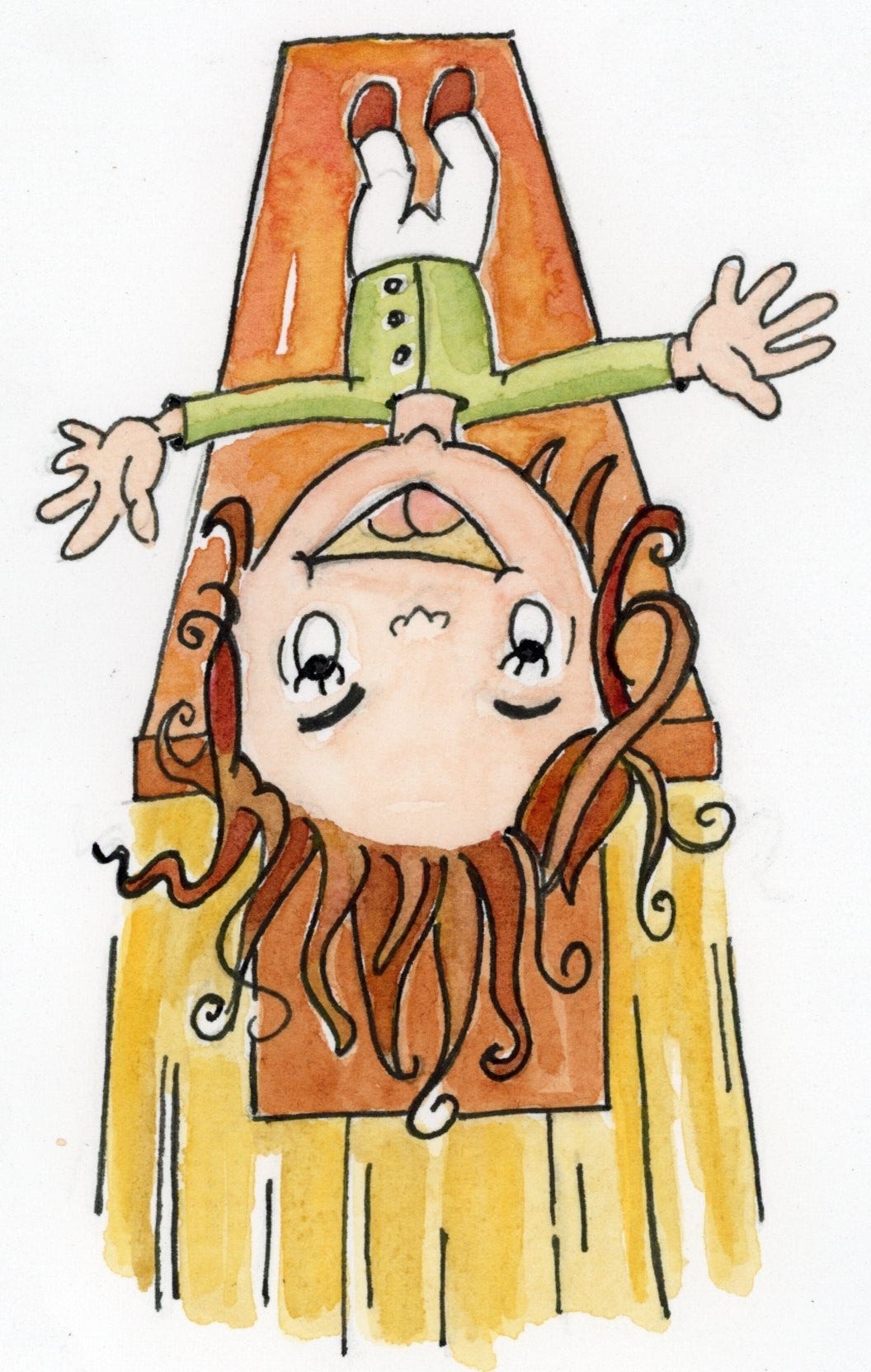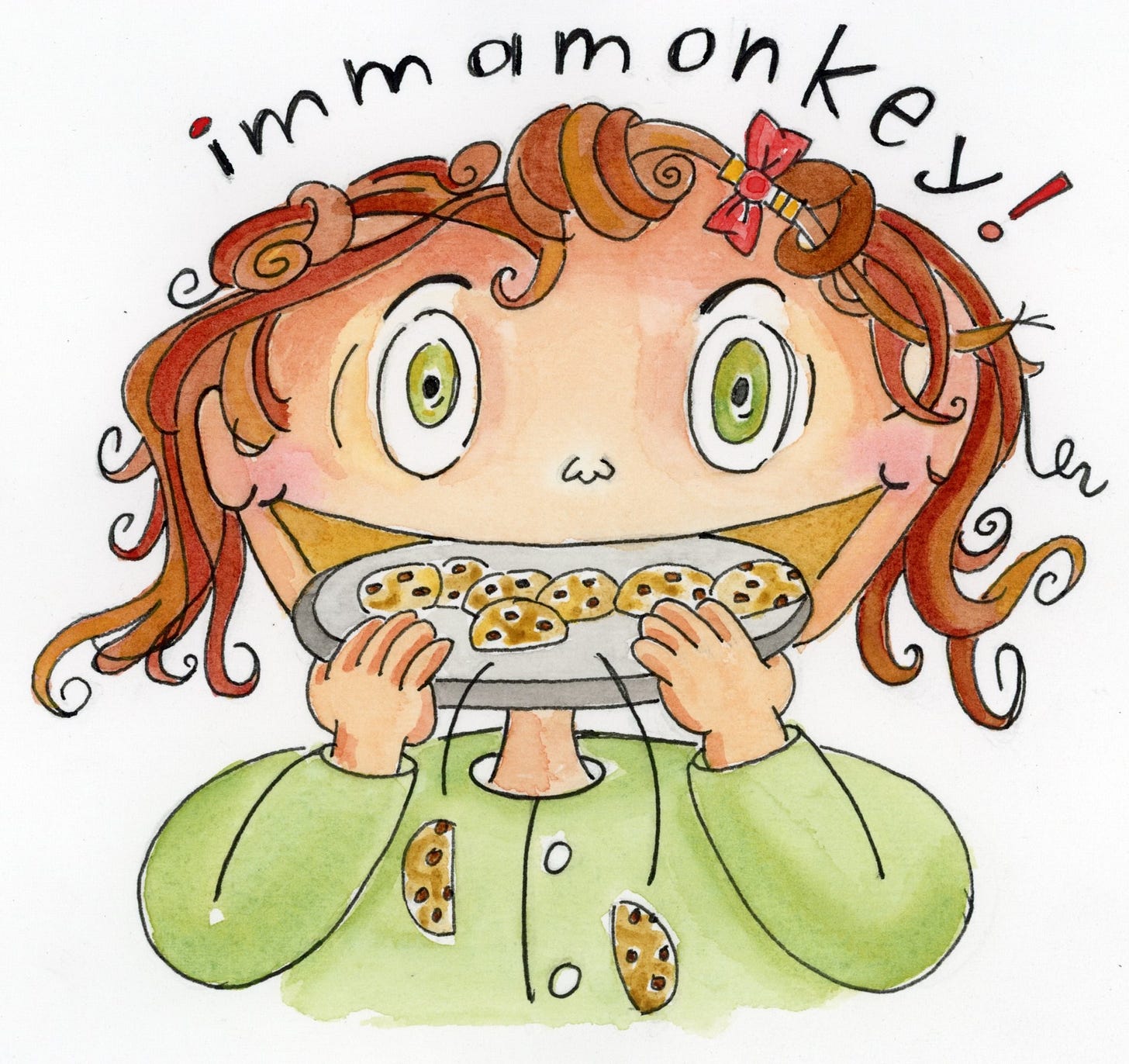I just met a three-year-old named Ivy. Appropriately enough, she was climbing the walls at the coffee shop.
Her parents sat down at the table next to mine, and she sprawled out, upside down, on the bench beside me. With a mouth that was now north of her eyes and arms stretched out wide, she struck up a conversation.
“I am a monkey,” she said, showing me her hands, as if they were evidence.
“Monkeys have hands,” I replied.
“I have hands,” she said. “I have feet too—and a butt. “
“Every creature has a butt,” I replied, “even worms. The hands are a better argument. You wanna see a monkey?” I asked.
I opened my laptop, zipped over to YouTube, and played for her “The Monkey and the Organ Grinder,” a short, educational video for school children from 1955. It’s a simple black-and-white, live action film of an old organ grinder, his monkey, and the children they perform for in the park.
After our introductory conversation Ivy became an acquaintance, but after we watched this video together, we were besties. I had given the girl her first taste of time travel. Even Ivy’s parents, I discovered, didn’t know what an organ grinder was until they saw Mr. Russo and his monkey, Mikel, scamming kids out of their pennies.
Ivy had a funny way of speaking that at first made her hard to understand. She opened her mouth too wide, as if she were trying to articulate her ideas at the same time that she was shoveling a plateful of cookies into her mouth.
I gave my ear a moment to adjust, to zero-in on the eccentricities of her pronunciation, and suddenly, just like that, I was fluent in Ivy. She was completely understandable. Very strange.
“I like the Cookie Place,” she said.
“Huh?” (Maybe not completely fluent.)
“She calls this coffee shop ‘the Cookie Place’ because this is where we buy her Snickerdoodles,” her father chimed in.
“Ah. I see,” I replied. “I like the Cookie Place, too, Ivy.”
“She has her own name for every place we go,” her father explained. “The gymnastics gym is “the Pirate Booty Place” because that’s where she gets her Pirate Booty snack. Aurelios Pizza she calls “Punch-You-In-The-Face Pizza” because there’s a poster there of a boxer getting punched in the face.”
“I like that,” I said.
If I went out to pizza with Ivy, I’d be completely oblivious to how that little girl was seeing the place. Aurelio’s Pizza, a well-known Chicago chain, is mixed up, in Ivy’s mind, with boxing!
For the rest of her life, whether she remembers it or not, or remembers it only in her deepest dreams, thin-crust pizza will always strike Ivy with a boxer’s punch.
It was a glimpse into the little girl’s mind and yet another reminder of how differently each of us sees the world. Limited to my own two eyes, I need the lesson repeated to me over and over again: we live in the same world, but we all have different maps.
Ivy, the monkey girl, put me in mind of Virginia Woolf’s Mrs. Dalloway—of all things. A classic of modern British literature, it’s a difficult novel because it is written in a “stream of consciousness” style. The narrator jumps from past to present to future within the mind of her characters and from the mind of one character to the mind of another without warning or explanation.
The novel immerses you in another’s mind; after reading it, you will never again presume to know what’s really going on in somebody else’s head.
The book is built on a nothing of a plot: it’s just a day in the life of Clarissa Dalloway, an Englishwoman in London preparing to throw a party. But Clarissa’s day is criss-crossed and shadowed by that of Septimus Warren Smith, a shell-shocked veteran of WWI hellbent on suicide.

The drama rests not on external events, on what happens, but on internal perceptions, on what events mean for these two characters. Woolf unfurls the fabric of their two minds in beautiful poetic prose. It doesn’t take long to realize that Clarissa’s mind has uncomfortable parallels with that of Septimus’, as if only a turn down one London street of the mind separates the insane vet from the perfect hostess.
There are two basic ways of going crazy in this world.
The first is by getting so lost in one’s own mind, one’s personal map of reality, that one mistakes it for reality itself. The second is by immersing oneself so deeply in the public mind that one mistakes its thoughts for one’s own. The crazies on the street scream their fantasies at the commuters clinging to common sense—and both are out of their minds.
“It is by a mathematical point only that we are wise,” Thoreau wrote.
The same could be said of sanity—the mental balance we must strike between understanding our shared reality and imagining how other individuals see it.
Our personal visions are woven into the fabric of our common world. The mathematical point of wisdom lies between the stitches—in the beautiful, maddening punch-you-in-the-face contradictions of life itself.
.







…deep thoughts born of just a simple visit to a coffee house…amazing what we can see in ourselves inside and outside of others…